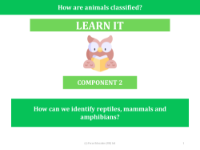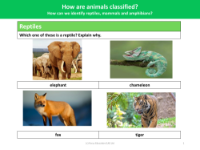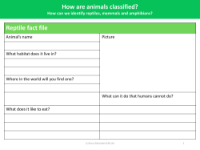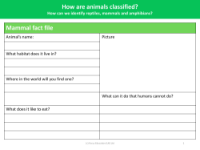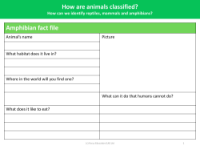How can we identify reptiles, mammals and amphibians? - Teacher notes

Science Resource Description
When teaching students about the classification of animals, it is important to distinguish between amphibians, reptiles, and mammals. These groups can be identified by unique characteristics that set them apart from birds and fish, which students are assumed to already recognize. To understand what an amphibian is, educators can utilize online resources that explain their distinctive features. After exploring these materials, students should be able to list five facts about amphibians, such as their ability to live both in water and on land, their moist skin, and their life cycle that includes a transformation from larvae to adult form.
Similarly, to identify reptiles, students can refer to educational content that describes their traits. Following this research, they should be able to articulate five key points about reptiles, including their scaly skin, egg-laying habits, and cold-blooded nature. When it comes to mammals, resources are available to help learners recognize them by their defining characteristics. After studying these, pupils should be capable of noting five aspects of mammals, like their warm-blooded status, hair or fur, and the nurturing of their young with milk. To consolidate their understanding, further study on the main differences between all animal types, including how animals are classified, can be beneficial. This comprehensive approach ensures that students can confidently identify reptiles, mammals, and amphibians.


